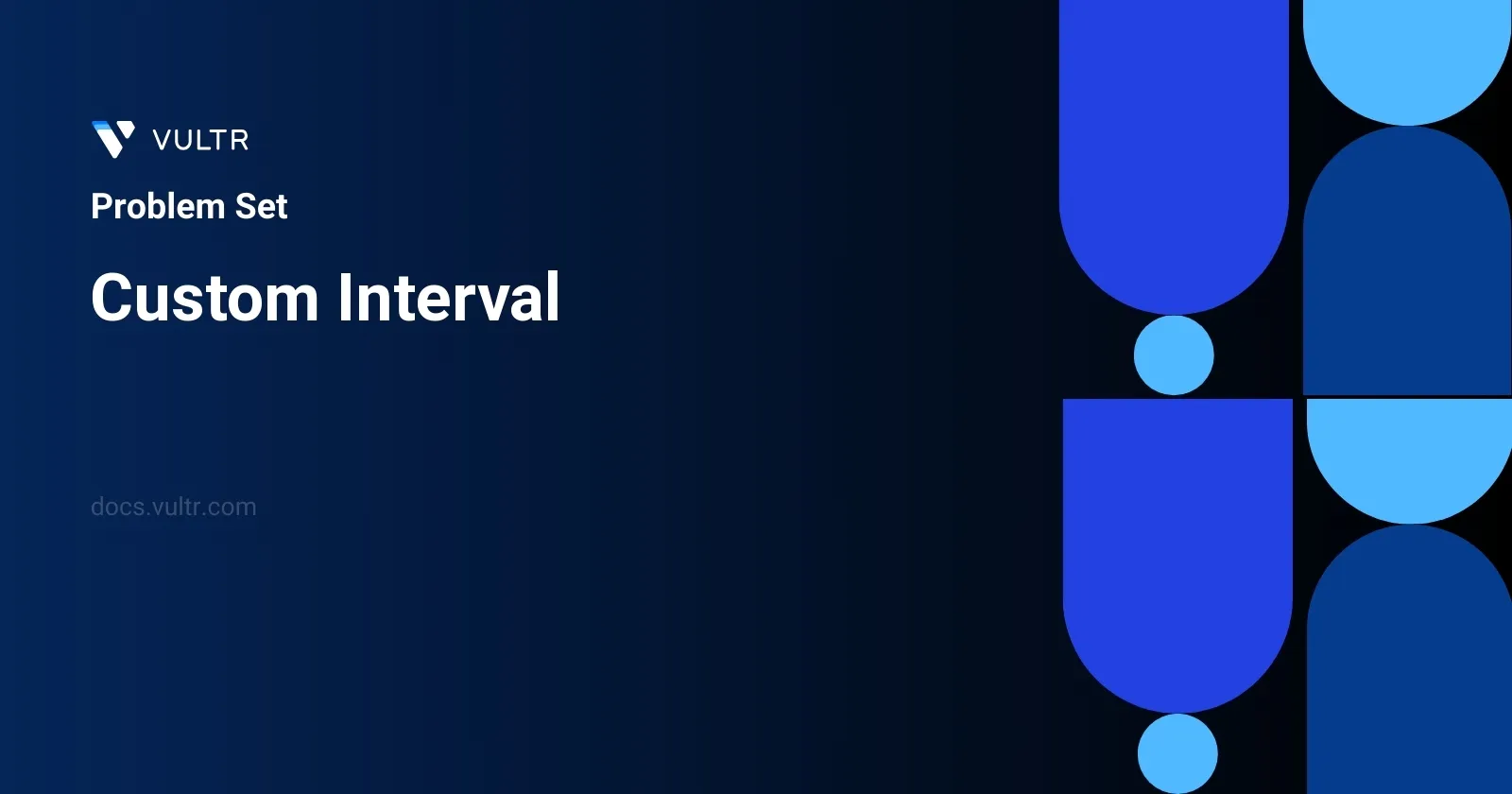
Problem Statement
The customInterval function is designed to execute another function, fn, repeatedly at intervals. These intervals are not constant but increase linearly based on the formula: delay + period * count. Here, count starts from zero and increments by one each time fn is executed. The function returns an identifier id, which can be used with another function, customClearInterval, to stop the scheduled execution.
The customClearInterval function takes this id and halts the ongoing execution pattern set by customInterval. This mechanism allows for dynamic control over function execution timing, governed by the initial delay and a repetitive increase by the period length.
The functionalities mimic a more flexible version of JavaScript's setTimeout and setInterval, which in some environments like Node.js would return an object instead of a number—adjusting for simplicity, customInterval instead returns a numerical id.
Examples
Example 1
Input:
delay = 50, period = 20, cancelTime = 225
Output:
[50,120,210]
Explanation:
const t = performance.now()
const result = []
const fn = () => {
result.push(Math.floor(performance.now() - t))
}
const id = customInterval(fn, delay, period)
setTimeout(() => {
customClearInterval(id)
}, 225)
50 + 20 * 0 = 50 // 50ms - 1st function call
50 + 20 * 1 = 70 // 50ms + 70ms = 120ms - 2nd function call
50 + 20 * 2 = 90 // 50ms + 70ms + 90ms = 210ms - 3rd function callExample 2
Input:
delay = 20, period = 20, cancelTime = 150
Output:
[20,60,120]
Explanation:
20 + 20 * 0 = 20 // 20ms - 1st function call 20 + 20 * 1 = 40 // 20ms + 40ms = 60ms - 2nd function call 20 + 20 * 2 = 60 // 20ms + 40ms + 60ms = 120ms - 3rd function call
Example 3
Input:
delay = 100, period = 200, cancelTime = 500
Output:
[100,400]
Explanation:
100 + 200 * 0 = 100 // 100ms - 1st function call 100 + 200 * 1 = 300 // 100ms + 300ms = 400ms - 2nd function call
Constraints
20 <= delay, period <= 25020 <= cancelTime <= 1000
Approach and Intuition
Based on the examples and constraints provided:
Linearly Increasing Execution Times:
customIntervalfunction initiates the execution offnafter a delay specified by the user. After the initial execution, it continues to executefnat intervals increasing linearly by a factor ofperiod.- For example, if
delayis 50 ms andperiodis 20 ms, the functionfnwill first run at 50 ms, then at 70 ms (50 + 20), then at 90 ms (50 + 20 + 20), and so on.
Stopping the Execution:
customClearIntervaluses theidreturned bycustomIntervalto stop further executions offn. This is particularly useful when one wants to stop the executions after a certain condition is met or a specific time (cancelTime) has passed.
Interpretation of Output Array:
- The output represents the actual times (relative to the start) when
fnwas executed. It reflects the cumulative time based on the formula used, including both the initial delay and subsequent periods. - Thus, for each execution time in the output, it depends on both the delay and the instances (count) of period addition before the function was halted by
customClearInterval.
- The output represents the actual times (relative to the start) when
Through these insights, users can effectively plan and control function executions with precision timing adjustments, setting and canceling them as per the dynamics of their specific applications or use-case scenarios.
Solutions
- JavaScript
const IntervalController = (() => {
let idCount = 0;
const mapOfIntervals = new Map();
function startInterval(callback, initialDelay, subsequentDelay) {
let invocationCount = 0;
const internalId = idCount++;
function executeInterval() {
const timeId = setTimeout(() => {
callback();
executeInterval();
}, initialDelay + subsequentDelay * invocationCount);
invocationCount++;
mapOfIntervals.set(internalId, timeId);
}
executeInterval();
return internalId;
}
function stopInterval(identifier) {
const timeId = mapOfIntervals.get(identifier);
clearTimeout(timeId);
mapOfIntervals.delete(identifier);
}
return {
setCustomInterval: startInterval,
clearCustomInterval: stopInterval
};
})();
function setDynamicInterval(callbackFunction, startDelay, repeatDelay) {
return IntervalController.setCustomInterval(callbackFunction, startDelay, repeatDelay);
}
function clearDynamicInterval(intervalId) {
IntervalController.clearCustomInterval(intervalId);
}
The code describes a module named IntervalController that allows users to handle custom intervals in JavaScript. This module enables the initiation and termination of intervals with dynamically adjustable delays. The use of a self-invoking function ensures that the internal state, like idCount and the interval map, remains encapsulated and separate from the global scope.
Usage of the
mapOfIntervalsMap object to track active intervals:- Each interval is assigned a unique identifier.
- Ensures efficient start and stop operations for individual intervals using these IDs.
The
startIntervalfunction:- Triggers a callback after an
initialDelay. - Adjusts the delay dynamically based on the number of times the callback has been executed. It incorporates an
invokeCountthat multiplies with asubsequentDelayto determine the timing of subsequent executions. - The dynamic adjustment provides finer control over scheduling repeat callbacks as opposed to traditional constant intervals with
setInterval.
- Triggers a callback after an
The
stopIntervalfunction:- Receives an identifier for the interval to be cleared.
- Utilizes JavaScript’s
clearTimeoutto stop the interval, ensuring resources are freed and execution is halted.
Use the helper functions setDynamicInterval and clearDynamicInterval to interface with the IntervalController. These enable setting custom intervals and clearing them by referring to their unique IDs. These functionalities will be particularly useful for applications that require non-linear or modified interval timing, such as in scenarios involving retry mechanisms with exponential backoff or animations that need to adjust frame delays dynamically.